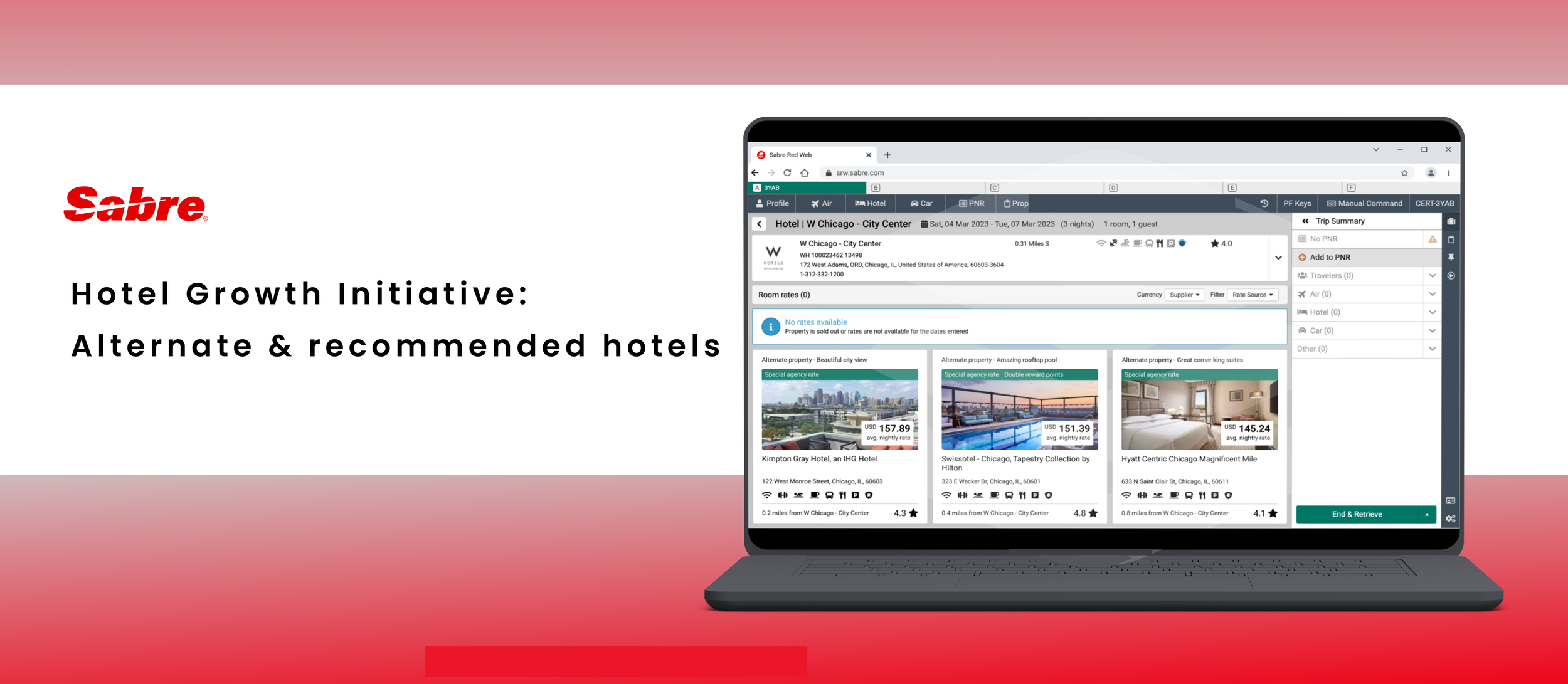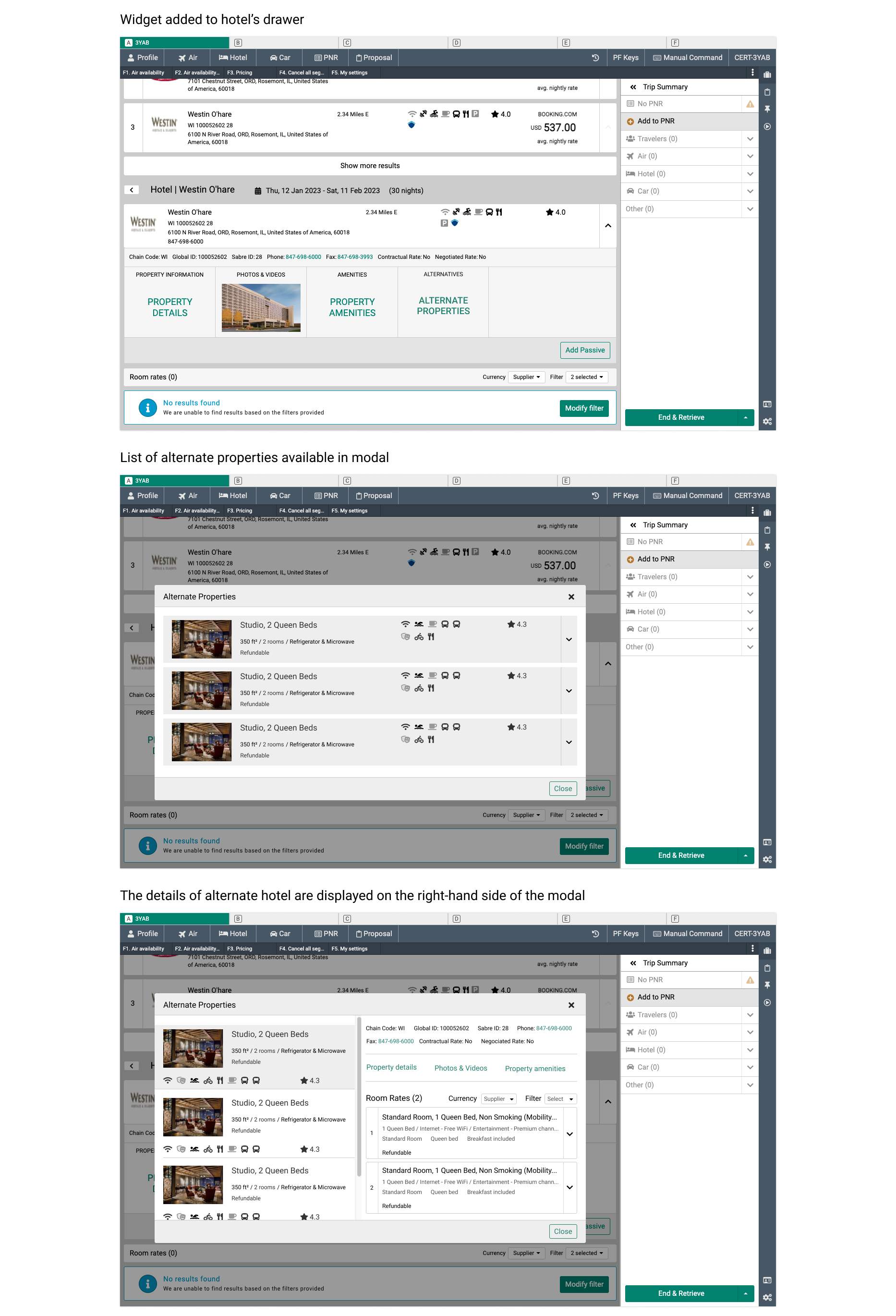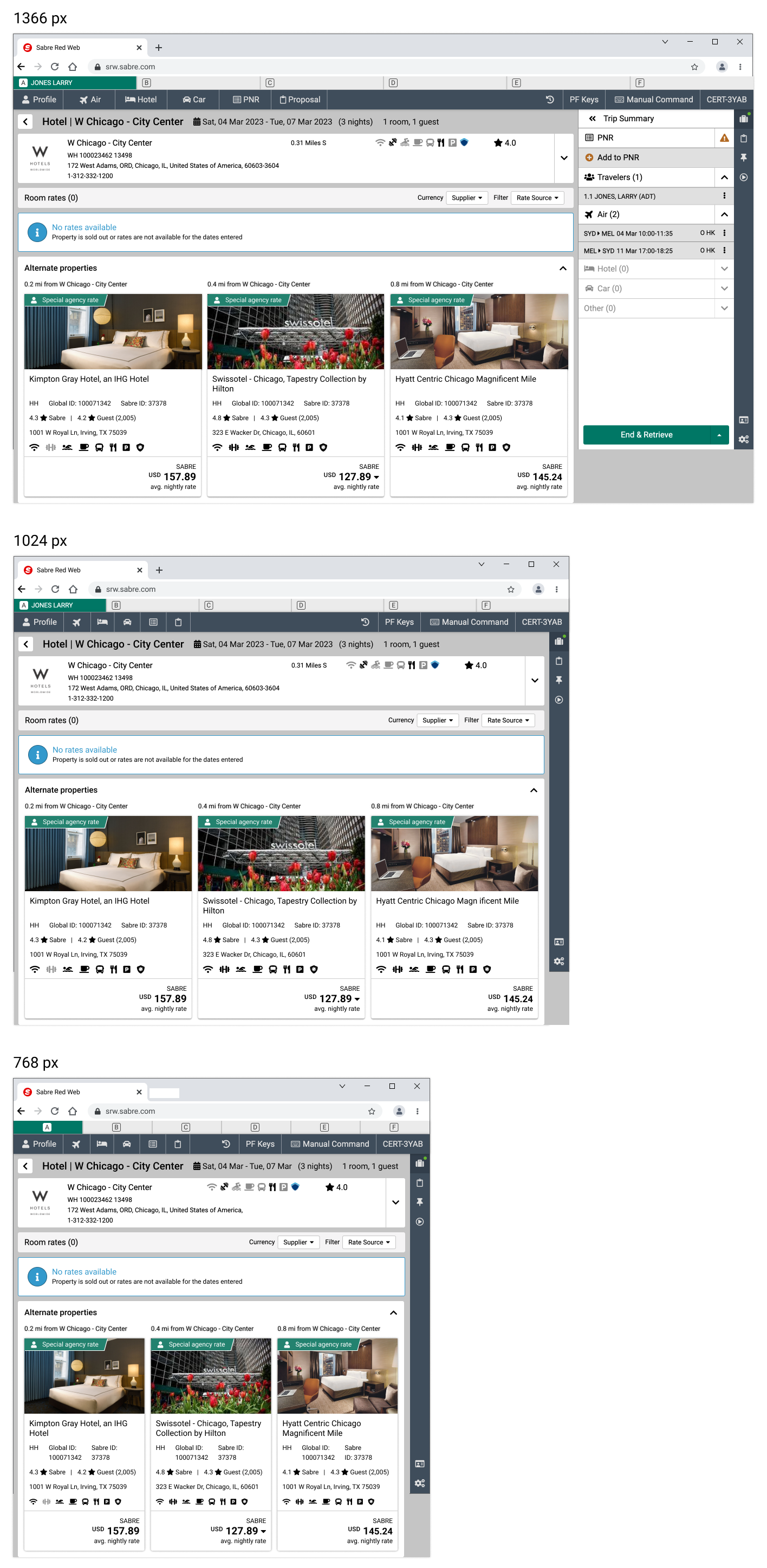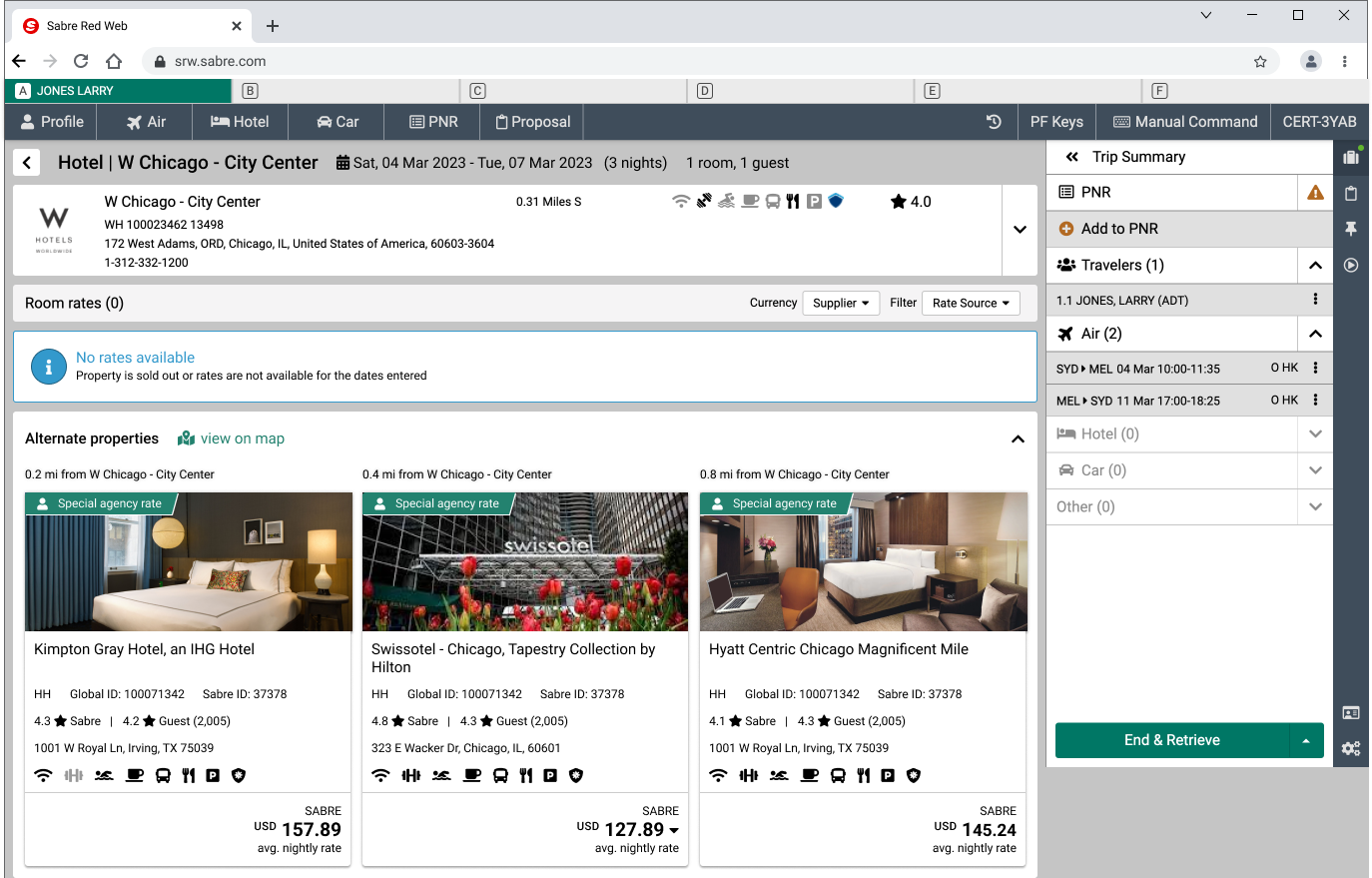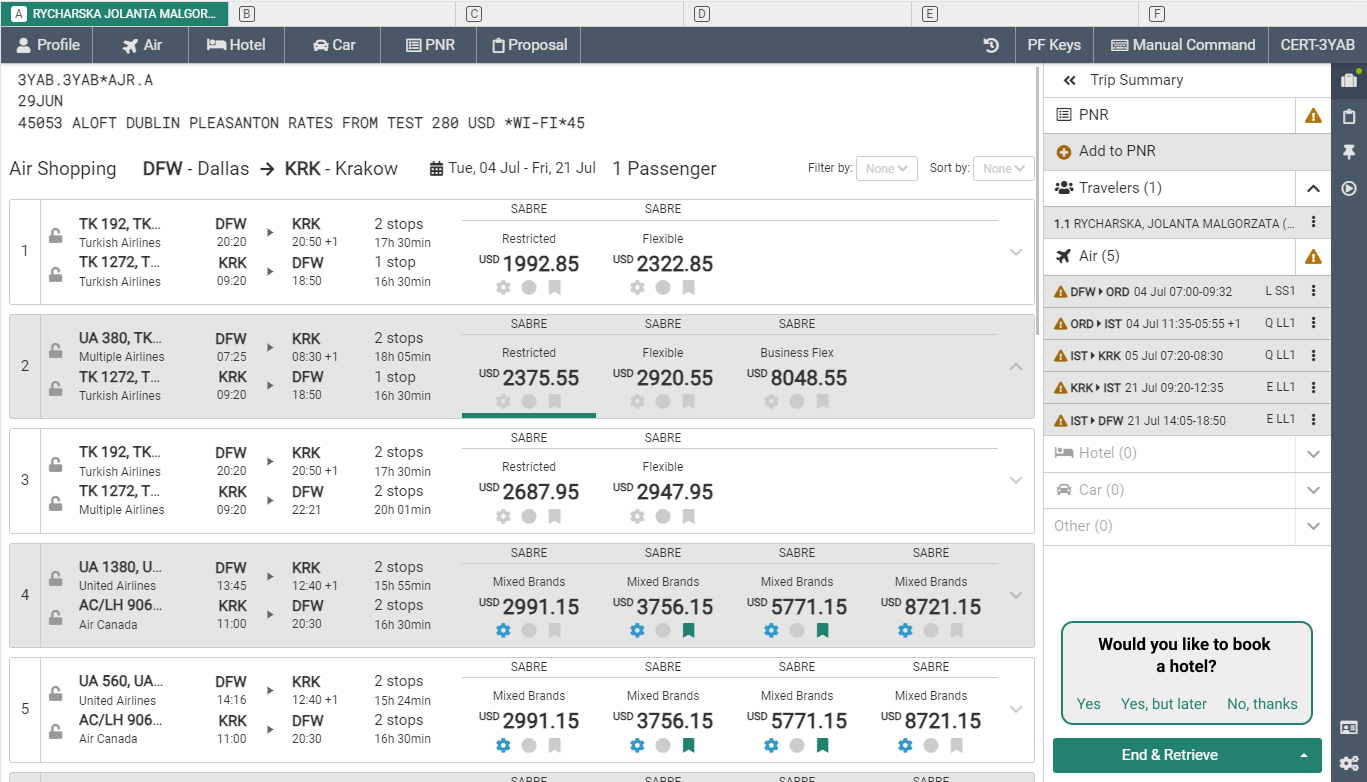Overview
Project goal: The purpose of the project was to optimize the hotel booking process in SR360 and expanding the selling flow and introducing the Alternative & Recommended Hotels modules to the platform. The project was one of two parts of the Hotel Growth Initiative, which aimed to increase the hotel booking rate when booking flight itineraries.
The solution: Design of alternative and recommended hotel modules and embed them correctly in existing travel booking flows.
Background
An analysis of the company's results and revenues showed a very low level of sales (bookings) of hotels. Additionally, it was noticed that only 12% of airline reservations include hotel sales attached. Business decided to take a closer look at it and check what causing it.
After talking to clients (travel agencies/agents), they found out what doesn't work/what is missing/what needs to be fixed:
SR 360 does not allow look for hotels using maps (this is global trend) and because of that travel agents go to competitors platforms and there they do the reservations
System does not allow to quickly change searching credentials and in situation that searching results brings no results, users must start searching once again.
Business decided to invest money and reply on those research findings. This initiative is going to be called: Hotel Growth Initiative and is going to contain 2 projects:
Integrate Google Maps searching solution into SR360
Prevent dead ends, while hotel rooms are not available
Research and discovery
New user persona
Competition research
Point of sale application audit
New user-persona
The COVID-19 pandemic has had a significant impact on the travel industry, including the workforce. Many travel agents left the profession in search of new jobs or retired, resulting in a new user profile for the SR360 system.
These new agents are often former waiters, baristas, and administrative employees who came to the tourism industry with different skill sets and expectations. They do not know or use text commands to perform searches, instead relying on the graphical user interface (GUI). They also expect to have more attractive and modern interfaces.
This presents a challenge for SR360, which was designed for a more traditional user base. The company will need to update the system to make it more user-friendly for the new agents. This includes adding more graphical elements and making the interface more modern.
Competition research
I reviewed several hotel booking websites and OTAs, such as Booking.com, Expedia, Google Hotel Finder, Orbitz, TripAdvisor, and Travelocity. I took screenshots of their hotel offer presentations to find inspiration for a more modern way of presenting data in the SR360 system.
Point of sale application audit
The system allows to do booking a hotel at any time - before or after booking a flight and/or a car, or regardless of this. The hotel search process can be divided into two stages:
The travel agent enters the basic search criteria, such as the location, dates, and number of guests. (To narrow down results other criteria can be added). The system then returns a list of hotels that meet the given criteria. This page is called the Hotel Search -(HOT) page.
From the hotel list, the travel agent selects chosen hotel. After clicking the hotel card - the user can see the hotel’s detail and can check available room rates. The agent may use filters to narrow down the results, or they may simply view all of the available rates. This page is called the Hotel Booking - (HOD) page.
Happens that the travel agent does not receive available hotels on his/her search request or there are no available room rates in a hotel that was chosen. These two scenarios are the areas where Alternative hotels (properties) can be introduced.
Brainstorming and ideation
Alternative Hotels - potential interactions
Hotel card
The idea of Hotel Recommender
Hotel Recommender - how/where to implement
Alternative hotels - interactions
I began my work by developing an interaction to introduce the alternative /recommended properties modules. For alternative hotels, I identified two potential solutions that could work in my scenario. Obviously, both ideas were to use patterns that already exist in SR360 to be able to provide users with consistent user experience and predictability.
Idea based on a clickable card - placed right after the “No results find” info message box. This solution is used in the system all the time we would like to see more results from searching. The alternate hotel's list displays after clicking (we see horizontal and vertical examples of presenting hotel cards)
Idea based on a widget that would be available from the opened drawer. Widgets are used commonly for many different features in SR360. Alternative hotels list displays in a separate modal.
Turned out that widget won't work - having hotel room rate cards in half of the modal wouldn't be the best user experience.
Hotel card
The new modern agent user prefers commercial interfaces with media. SR360 globally aims to go to this trend.
Taking the above into account, the Alternate Hotel module as well as the hotel card itself will look completely different than our current components.
Inspired by the research results, I created several versions of hotel cards. Together with UX teammates, I chose three of them - responsiveness was key.
The idea of Hotel Recommender
This idea was born during interdisciplinary team discussions. We agreed that the introduction of recommended hotels could potentially increase hotel sales.
The goal of Hotel Recommender was to address the situation where a travel agent books a flight, does the price quotes, and then tries to end PNR (by clicking End & Retrieve button). Hotel Recommender is supposed to remind users to add a hotel to their itinerary.
Hotel Recommender - how/where to implement
The system allows the user to freely build an itinerary. A travel agent may start by recalling the client's profile, but may also start by booking a flight or renting a car). Given this, there were several factors that had to be considered when implementing this feature:
the basic one was how to introduce Hotel Recommender: how to ask the user if he would like to add a hotel (nudge message, pop-up, any permanent place in Summary Trip panel) and when to ask such a question and whether to ask it several times (be vigilant about alert fatigue)
the system should react only to new reservations (PNR) - there can be no situation that opening old reservations will cause the system to ask us if we want to book a hotel
on what basis should the list of recommended hotels be displayed: on the basis of flight destination or on the basis of historical data, recalled from the client's profile
The decision was to focus at this point only on the mechanism of how to introduce Recommended hotels and test if this feature will work for our users.
Design
Alternative properties module - responsive
Hotel Recommender module
Alternative properties module
After selecting the hotel card, it was necessary to create the Alternate properties module. The hotel card was created based on auto-layout, so the work on responsive design went smoothly.
Hotel Recommender module
For the upcoming usability study, the cross-functional team made a decision to test a Hotel Recommender as well. I prepared a design that was very similar to Alternate properties.
Validation with users
Our UX research team talked with 22 participants. That was a mix of travel advisors, admins operations and IT specialists, and trainers. All of them do a mix of corporate and leisure travel booking as well as international travel. Alternate & recommended hotel features were tested parallel with other new hotel functionality (hotel searching using google maps) that Sabre is about to introduce.
You can find out more about usability study key learnings by clicking on link.
Conclusions and next steps
The usability study showed that Alternate Hotels is a good direction and users like them. This feature prevents multiple searches and dead ends that in the past caused an agent to give up looking for an available hotel on SR360 and look for a hotel at a competitor.
We can assume that adding the Alternate Hotels function will increase the sale hotel attachment rate.
To address the need to show Alternate hotels on the map, a button will be added to allow you to see the alternate properties on the map and how far they are from the original hotel.
The Hotel Recommender function in the interaction in which it was tested was rather frustrating for the user. The most common user reaction was a quick desire to close the Hotel Recommender modal.
However, an in-depth interview about this function, allows us to assume that Hotel Recommender could fulfill its functions only if it would appear in selected situations.
So the task is to think carefully and program the interaction and also think about the best place to display the reminder but not to be too insistent, eg. some nudge message.

